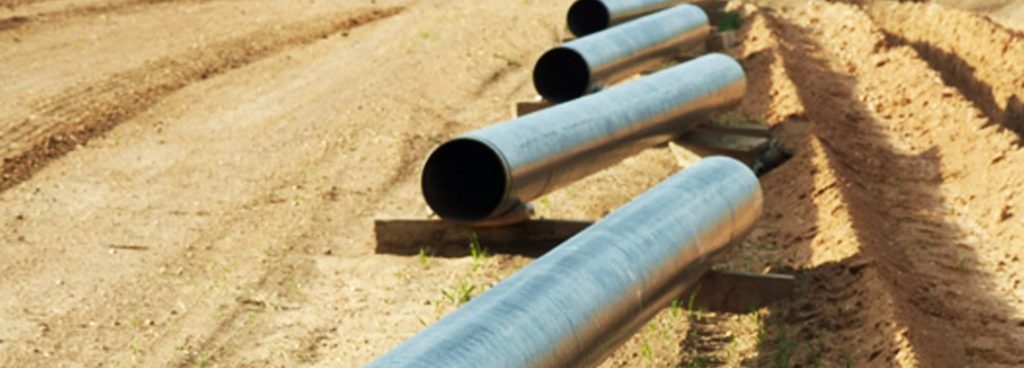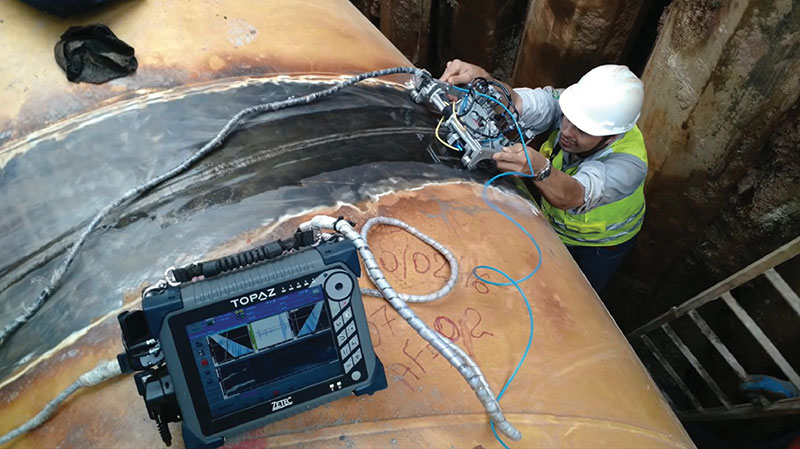Comprehensive Introduction of Pipe Welding Evaluation Procedures
In the world of pipe building and construction, making certain the integrity and safety of welded joints is critical. Pipeline welding inspection procedures play a crucial duty in assuring that bonded links fulfill rigorous sector requirements and specs. From careful pre-welding assessments to extensive post-weld analyses, a distinct examination procedure is necessary for preserving the structural stability of pipelines. Recognizing the details of welding evaluation treatments is not just a regulative requirement but additionally an essential facet of promoting the dependability of these crucial facilities.
Pre-welding Evaluation Preparations
Prior to commencing the welding procedure, complete pre-welding assessment prep work are vital to guarantee the integrity and quality of the weld joint. These preparations involve a careful assessment of the materials to be bonded, the welding tools, and the work setting. By carrying out extensive pre-welding inspection prep work, potential concerns can be determined and dealt with early on, leading to high-quality and trusted weld joints.
Welding Procedure Credentials
Extensive pre-welding inspection prep work lay the foundation for the important procedure of Welding Treatment Certification, ensuring the honesty and quality of the weld joint. Welding Treatment Qualification (WPQ) is a crucial step in the welding process that entails testing and accrediting welding procedures to ensure they fulfill specific requirements and needs. The WPQ process normally includes welding treatment specification advancement, welding treatment credentials screening, and paperwork of the outcomes.
During welding procedure spec advancement, important details such as the welding process, welding products, joint layout, and welding parameters are defined to produce a thorough procedure. Subsequently, welding procedure certification screening is performed to validate the proposed procedure's stability. This testing commonly entails welding test coupons that go through different mechanical and non-destructive tests to examine the weld's top quality and adherence to the defined criteria.
In-process Weld Inspection
During the welding process, in-process weld inspection plays an important duty in ensuring the quality and integrity of the weld joint - Pipeline Welding Inspection. This type of inspection involves monitoring the welding parameters, assessing the weld bead development, and spotting any potential defects or suspensions as they happen. By carrying out in-process weld evaluations, welding operators can promptly address any issues that may occur, consequently stopping additional flaws and guaranteeing that the last weld satisfies the needed specifications
Usual techniques utilized for in-process weld inspection consist of visual inspection, fluid penetrant testing, magnetic fragment screening, ultrasonic testing, and radiographic screening. Visual examination is commonly the very first step while doing so, permitting inspectors to aesthetically evaluate the weld for surface area irregularities such as splits, porosity, or incomplete blend. Extra sophisticated methods like ultrasonic screening and radiographic testing supply in-depth insights into the inner structure of the weld, ensuring that there are no concealed defects that might endanger the weld joint's stamina and honesty. In general, in-process weld inspection is necessary for maintaining the high quality and integrity of welded pipes.
Non-destructive Testing (NDT)
Non-destructive Testing (NDT) is an essential method utilized in pipeline welding assessment to assess the integrity of weld joints without triggering damage to the bonded framework. By making use of various NDT techniques, inspectors can assess the high quality of welds and recognize any kind of flaws or read here interruptions that might endanger the architectural strength of the pipe. Usual NDT approaches made use of in pipe welding inspection consist of Radiographic Testing (RT), Ultrasonic Testing (UT), Magnetic Bit Checking (MPT), Fluid Penetrant Screening (LPT), and Visual Testing (VT)
RT includes using X-rays or gamma rays to create pictures of the interior structure of the weld, allowing examiners to discover defects such as porosity, splits, or incomplete fusion. UT utilizes high-frequency acoustic waves to find defects underneath the surface area of the weld, supplying thorough details concerning my site the size and place of flaws. MPT and LPT are made use of to determine surface-breaking flaws by applying magnetic particles or penetrant fluids to the weld location. Furthermore, VT involves aesthetic examination of welds to recognize any kind of noticeable imperfections.
Post-weld Assessment and Documentation

Documentation of post-weld examination searchings for is important for keeping high quality control documents and guaranteeing compliance with market standards and guidelines. Detailed records should consist of information concerning the inspection techniques used, the place and nature of any kind of flaws found, and any kind of corrective actions taken - Pipeline Welding Inspection. Correct documentation not just serves as a record of the weld's top quality but likewise help in future upkeep and evaluation procedures
Conclusion

In verdict, pipe welding assessment treatments play a crucial duty in making certain the quality and stability of welds. Generally, adherence to proper assessment methods is vital to the success of pipeline welding projects.
From careful pre-welding evaluations to comprehensive post-weld analyses, a well-defined evaluation process is necessary for keeping the structural strength of pipes. By performing in-process weld examinations, welding operators can immediately attend to any kind of concerns that might develop, thereby protecting against further issues and making certain that the last weld fulfills the required requirements.
Typical techniques utilized for in-process Clicking Here weld inspection consist of aesthetic evaluation, liquid penetrant testing, magnetic particle testing, ultrasonic screening, and radiographic testing.Non-destructive Testing (NDT) is an essential method employed in pipe welding assessment to assess the honesty of weld joints without triggering damages to the bonded framework. Post-weld inspection entails different approaches to examine the welds for problems, consisting of aesthetic inspection, color penetrant testing, magnetic fragment screening, ultrasonic screening, and radiographic screening.